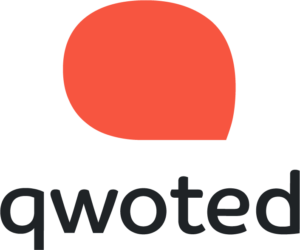Media Coverage Mastery: Expert Tips from Professional Pitch Trainers

Securing media coverage with high-profile media outlets might seem like an out-of-reach goal for small business owners. But with the right strategies, boutique brands position themselves as experts every day.
To get an outside perspective on landing features in publications like Time, Forbes, and Fortune, we sat down with Lydia Bagarozza and Bridget Aileen Sicsko, the dynamic co-founders of Visibility on Purpose. These two have helped countless small businesses break into top-tier press features, and their focus on making media opportunities more accessible resonates with what we’re doing at Qwoted.
In this exclusive Q&A, Lydia and Bridget share their go-to tips on getting noticed by high-profile media, building strong relationships with journalists, and avoiding common pitch pitfalls.
Qwoted: We’re impressed with the press features you’ve been able to secure for your clients. When pitching to big outlets like Time or Forbes, is there a go-to formula that works for you?
VOP: We’d say it’s not so much a formula or structure as it is a strategy. For competitive and “business-leaning” outlets like Time and Forbes, we’d recommend speaking their language—essentially, representing yourself, your brand, or your answers in a way that maintains the professional tone that their readers are used to reading. Now, if you were working with outlets like PopSugar, Thrillist, or Buzzfeed, which focus on pop culture and trends, we’d recommend generating more casual responses.
Qwoted: For small business owners or boutique brands with little media experience, what advice would you give to help them confidently position themselves as experts when pitching?
VOP: Confidence typically comes with clear brand messaging. If any small business owner or boutique brand is struggling with confidence, it may be helpful to revert back to their branding and make sure everything (i.e. messaging, positioning, website, and social platforms) feels strong, clear, and positioned well. We’d also recommend getting some media training around how the media works. We’ve found that understanding and knowing how the industry operates (and what’s expected from them as a source) can provide immense value and naturally provide confidence to navigate their new strategy.
Qwoted: Regarding strategy, let’s talk about building relationships with journalists. How big of a role do relationships actually play in successful pitching?
VOP: Relationships are crucial when it comes to pitching! It’s important to remember that behind their fancy titles, writers, podcast hosts, and TV anchors are people too! We always recommend being as human and genuine as possible when pitching.
We’ve also heard firsthand that many writers will continue reading pitches if the introduction is personal or mentions one of the previous articles they’ve written.
Qwoted: On that note, what other advice do you have for building long-term connections with journalists and media outlets? Is there a certain approach that tends to work best?
VOP: Don’t just pitch them mindlessly or land a feature and never speak to them again. Instead, connect with them on social media! Adding a human touch to a very digital world is super important. Follow journalists on LinkedIn, Instagram, and X (Twitter). Like, engage, and comment on their posts, and if you ever see something relatable, make sure to let them know.
This one should go without saying, but if a journalist features you in an article, thank them. The key is to be human and interact with kindness, always.
Qwoted: Before we wrap up, I’d like to know the most common pitching pitfalls. Is there anything in a pitch that immediately raises a red flag for you?
VOP: Here are some of the most common mistakes.
1) Lack of research—it’s always important to know WHO you are pitching. If you are an interior designer who would love to be featured in Better Homes and Gardens, you won’t want to contact a food writer at that outlet. Read their titles before pitching.
2) Answer the writer’s requests. We have seen small business owners go off on tangents or send different products than requested simply because they saw a shiny magazine name. This is a waste of everyone’s time. It’s important to give them what they’re asking for, and it helps to land big features!
3) Anticipate needs. Journalists are busy people! If you pitch them, make sure to provide high-resolution images, proper titles, links, etc. This will help minimize the back and forth.
For personalized pitching coaching, connect with Lydia and Bridget from Visibility on Purpose on their website and on Instagram.
Put Your Pitch to the Test
Thousands of journalists on Qwoted are looking for fresh expert voices like yours. Ready to land that top-tier publication feature? Use these valuable insights from Visibility on Purpose and put your pitch to the test today!
To get the latest strategy tips from our team, follow us on social!
POPULAR POSTS
LATEST ARTICLES
CATEGORIES
